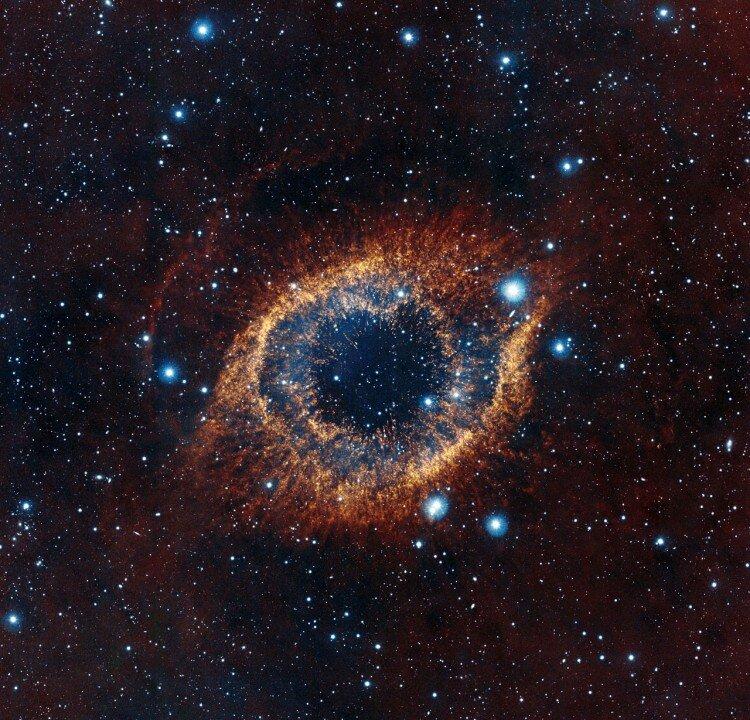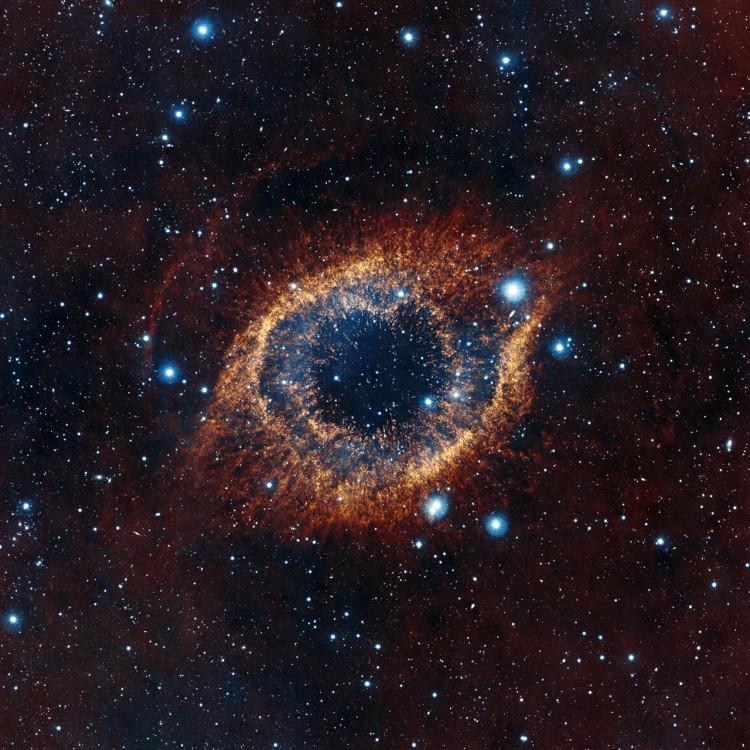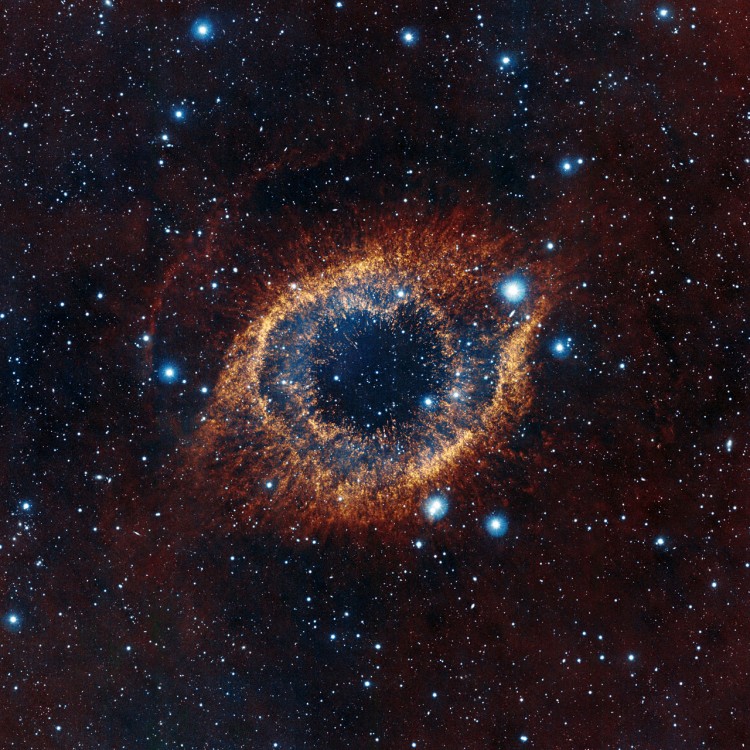A new photo of the Helix Nebula, located about 700 light-years away in the constellation of Aquarius, was captured by the European Southern Observatory’s VISTA telescope in Chile.
Seen in infrared light, the planetary nebula is composed of dust and cold molecular hydrogen gas, forming a beautiful pattern around a hot star, which appears as a tiny blue dot in the center of the image.
Once an aging sun-like star, it could not retain its outer layers and dropped shells of gas to form the nebula rings. The main ring spans about two light-years, but matter from the nebula is spread across a distance of at least four light-years.
The detailed structure of the rings can be seen with filaments of matter radiating outward. These strands are called cometary knots, and they are actually about the size of our own solar system. The molecules inside these knots are protected from destruction by the star’s radiation due to this clumping, and by surrounding dust and gas.
The Helix is also known as NGC 7293 and is one of the closest examples of a planetary nebula. This description refers only to the fact that such nebulae look similar in appearance to giant planets.






